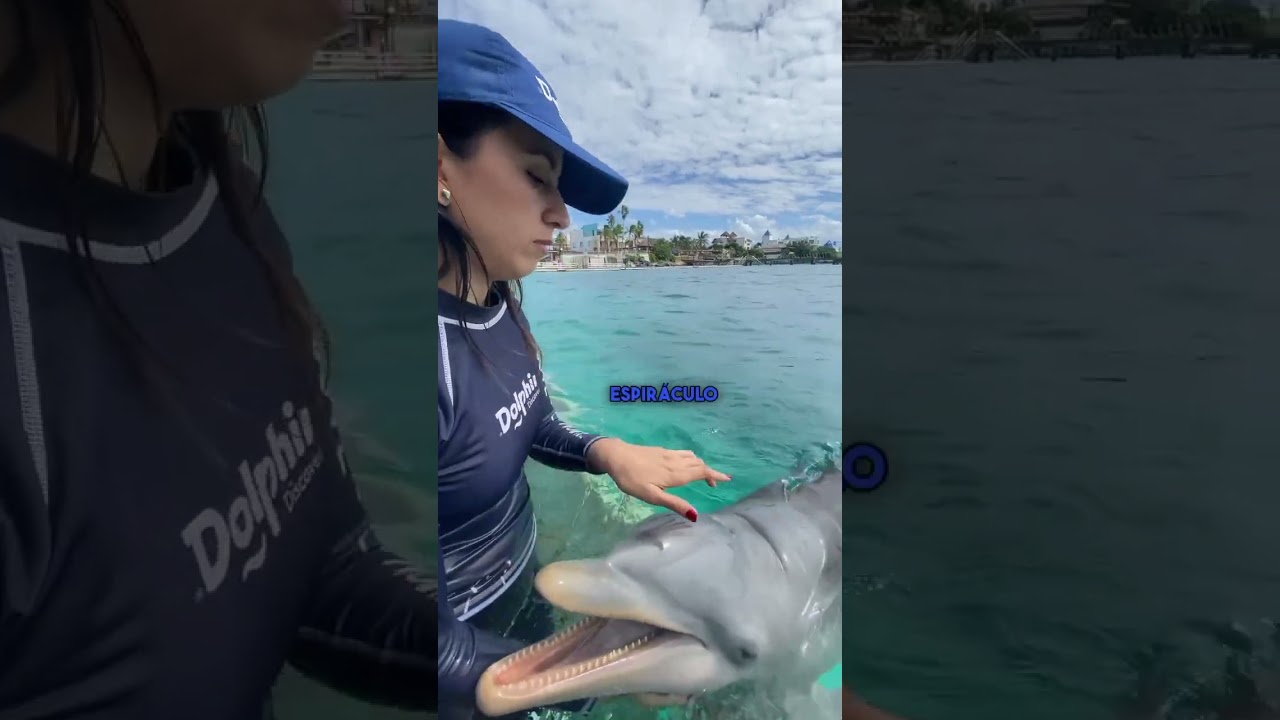- Understanding the anatomy and function of the dolphin’s blowhole, essential to their respiratory system and adaptation to aquatic life.
- The role and management of dolphins within zoological settings, emphasizing care and conservation practices.
- Conservation efforts directed at dolphins, highlighting global initiatives and the importance of maintaining marine biodiversity.
The Anatomy and Function of the Dolphin’s Blowhole
Dolphins are remarkable marine mammals known for their intelligence, social behavior, and adaptability to aquatic life. A key component of their physiological adaptation is their respiratory system, specifically the blowhole, which plays a crucial role in their survival. Positioned on the top of a dolphin’s head, the blowhole is not just a simple opening but a sophisticated organ that functions similarly to human nostrils. However, unlike humans, dolphins consciously control their breathing. This active process allows them to come to the surface to exchange air every few minutes, though they can hold their breath for much longer periods when necessary.
The blowhole is equipped with a muscular flap that ensures it remains tightly closed when the dolphin is submerged, protecting it from water entry. When a dolphin surfaces, this flap opens, allowing for the rapid expulsion of air, which can be seen as a characteristic spout—typically a mix of water vapor and residual breath. The efficiency of this process is vital, as it minimizes the time the dolphin remains at the surface, reducing vulnerability to predators and maintaining energy for hunting and social interactions.
Moreover, the blowhole’s anatomy is intricately linked to a dolphin’s echolocation abilities. Sound waves used in echolocation are generated in the nasal passages just below the blowhole. This dual function of respiration and communication underscores the evolutionary adaptations that make dolphins one of the most effective predators in the marine environment. Understanding the functional anatomy of the blowhole contributes to a broader comprehension of dolphin physiology, emphasizing the adaptations that support their aquatic lifestyle.
The Role and Management of Dolphins in Zoological Settings
Within zoological parks and aquariums, dolphins are often a focal point due to their popularity and the educational opportunities they present. Managing dolphins in these settings requires specialized knowledge and practices to replicate aspects of their natural environment and meet their complex needs. Dolphin enclosures are designed to accommodate their active nature, providing ample space for swimming, diving, and social interactions. These facilities also incorporate elements that allow dolphins to engage in behaviors that promote physical and mental stimulation.
Zoological management of dolphins extends beyond physical health to include social health care. Dolphins are social animals that thrive in groups, often referred to as pods. In captivity, they are housed in social groups that reflect their natural social structures to prevent stress and promote natural behaviors. Training techniques based on positive reinforcement are employed not only for entertainment and education purposes but also to facilitate veterinary examinations and procedures without causing undue stress to the animals.
Educational programs and public exhibitions in zoological settings serve a dual purpose. They provide visitors with an opportunity to learn about dolphin biology, behavior, and the challenges they face in the wild, fostering a connection that inspires conservation advocacy. These experiences can build support for broader conservation initiatives and spark interest in marine biology and conservation careers.
Conservation Efforts for Dolphins and Marine Biodiversity
Dolphins, like many marine species, face significant threats from human activities such as habitat destruction, pollution, and the effects of climate change. Conservation efforts are critical to mitigating these threats and ensuring the survival of dolphin populations globally. International agreements and initiatives, including the Marine Mammal Protection Act and the Convention on the Conservation of Migratory Species of Wild Animals, focus on protecting dolphins and their habitats.
Research and monitoring programs play a critical role in conservation by providing data on dolphin population dynamics, health, and behavior. This information helps identify critical habitats and informs the development of effective management and protection strategies. Efforts to reduce bycatch, a major threat due to commercial fishing operations, involve developing and implementing bycatch mitigation technologies and practices.
Public awareness and education campaigns are key components of dolphin conservation. By educating communities and stakeholders, these campaigns promote practices that reduce negative impacts on marine environments, such as advocating for marine protected areas (MPAs) that limit human activities in critical dolphin habitats. These protected areas are essential for conserving marine biodiversity and providing safe havens where dolphins can thrive without the pressures of human interference.
Overall, the conservation of dolphins encompasses a multidisciplinary approach that integrates science, education, policy, and community involvement. Successful conservation ensures the resilience of dolphin populations and maintains the ecological balance within marine ecosystems, highlighting the interconnectedness of species and the importance of protecting our oceanic resources.
*****
Source Description
#Dolphins #dolphin #dolphindiscovery


